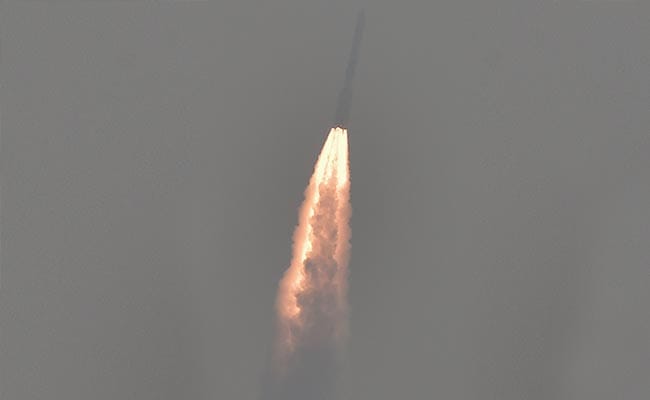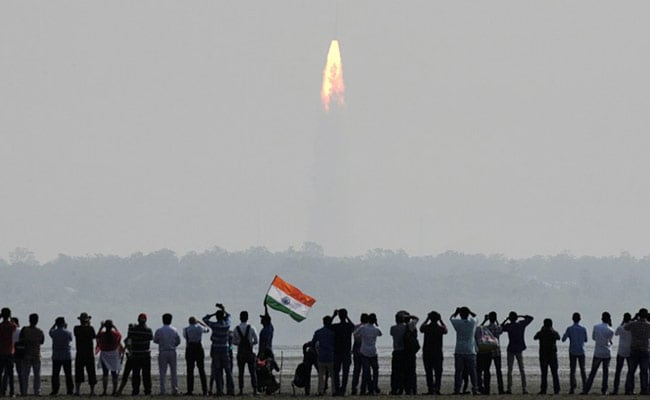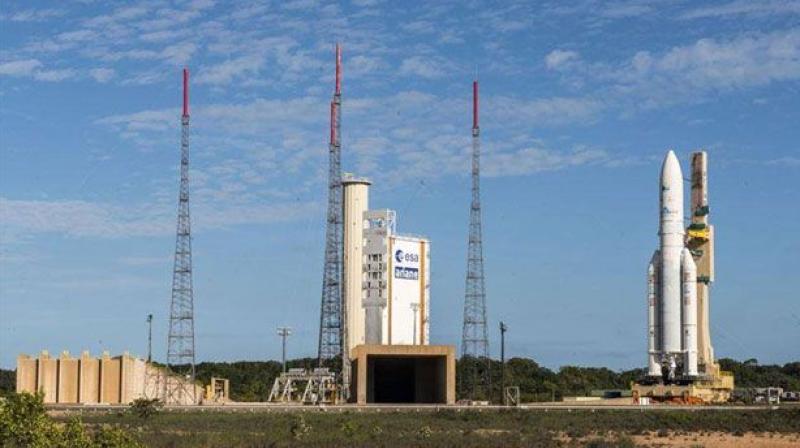The 28-hour countdown for the launch of a record 104 satellites by India on board a single rocket from the spaceport of Sriharikota, about 125 km from here, is commenced today.
India will become the first country to script history if it succeeds in launching the 104 satellites in a single rocket.
The countdown for the launch of PSLV-C37/Cartosat2 Series satellite mission began at 5:28 AM soon after the Mission Readiness Review committee and Launch Authorisation Board gave its approval for lift off, Indian Space Research Organisation (ISRO) said.
Scientists have commenced filling of the propellant for the rocket, it said.
The space agency's trusted workhorse Polar Satellite Launch Vehicle PSLV-C37, on its 39th mission, would launch a record 104 satellites belonging to international customers.
What is significant about the launch is the number of satellites carried by a rocket. Compared to successful launch by the Russian Space Agency launching 37 satellites in one go, India will become the first country to script history if it succeeds in launching 104 satellites in a single rocket.
It will also be ISRO's second successful attempt after launching 23 satellites in one go in June 2015.
PSLV will first launch the 714 kg CARTOSAT-2 Series satellite for earth observation and then inject 103 co-passenger satellites, together weighing about 664 kg at lift-off into polar Sun Synchronous Orbit, about 520 km from Earth.
ISRO scientists have used the XL Variant -- the most powerful rocket -- earlier used in the ambitious Chandrayaan and during the Mars Orbiter Mission (MOM).
Of 101 co-passenger satellites, 96 belong to USA, five from International customers of ISRO -- Israel, Kazakhstan, Netherlands, Switzerland, United Arab Emirates, respectively.
Two other Indian nano satellites, totally weighing about 1,378 kg, will also ride piggyback in the rocket. The nano-satellites belonging to international customers are being launched as part of the arrangement by Antrix Corporation Ltd (ANTRIX) the commercial arm of the ISRO.
Cartosat-2 Series, which is the primary satellite, will be similar to the earlier four satellites in Cartosat-2 Series.
After coming into operation, it will provide remote sensing services. Images sent by it will be useful for coastal land use and regulation, road network monitoring, distribution of water and creation of land use maps, among others. Cartosat-2 Series has a mission life of five years.
The two Indian Nano-satellites INS-1A and INS-1B were developed as co-passenger satellites to accompany bigger satellites on PSLV.
The primary objective of INS (ISRO Nano Satellite) is to provide an opportunity for ISRO technology demonstration payloads, provide a standard bus for launch on demand services.
INS-1A carries Surface Bidirectional Reflectance Distribution Function Radiometer and INS-1B caries Earth Exosphere Lyman Alpha Analyser as payloads.
Quelle: DECCAN Chronicle
-
Update: 15.02.2017 / 8.00 MEZ
.
PSLV-C37 Successfully Launches 104 Satellites in a Single Flight

In its thirty ninth flight (PSLV-C37), ISRO's Polar Satellite Launch Vehicle successfully launched the 714 kg Cartosat-2 Series Satellite along with 103 co-passenger satellites today morning (February 15, 2017) from Satish Dhawan Space Centre SHAR, Sriharikota. This is the thirty eighth consecutively successful mission of PSLV. The total weight of all the 104 satellites carried on-board PSLV-C37 was 1378 kg.
PSLV-C37 lifted off at 0928 hrs (9:28 am) IST, as planned, from the First Launch Pad. After a flight of 16 minutes 48 seconds, the satellites achieved a polar Sun Synchronous Orbit of 506 km inclined at an angle of 97.46 degree to the equator (very close to the intended orbit) and in the succeeding 12 minutes, all the 104 satellites successfully separated from the PSLV fourth stage in a predetermined sequence beginning with Cartosat-2 series satellite, followed by INS-1 and INS-2. The total number of Indian satellites launched by PSLV now stands at 46.

After separation, the two solar arrays of Cartosat-2 series satellite were deployed automatically and ISRO's Telemetry, Tracking and Command Network (ISTRAC) at Bangalore took over the control of the satellite. In the coming days, the satellite will be brought to its final operational configuration following which it will begin to provide remote sensing services using its panchromatic (black and white) and multispectral (colour) cameras.
Of the 103 co-passenger satellites carried by PSLV-C37, two – ISRO Nano Satellite-1 (INS-1) weighing 8.4 kg and INS-2 weighing 9.7 kg – are technology demonstration satellites from India.
The remaining 101 co-passenger satellites carried were international customer satellites from USA (96), The Netherlands (1), Switzerland (1), Israel (1), Kazakhstan (1) and UAE (1).
With today’s successful launch, the total number of customer satellites from abroad launched by India’s workhorse launch vehicle PSLV has reached 180.
--
Frams von LIVE-Start:

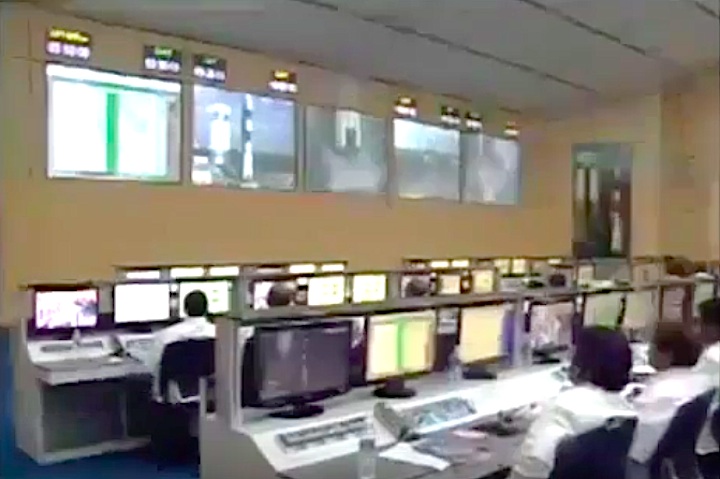

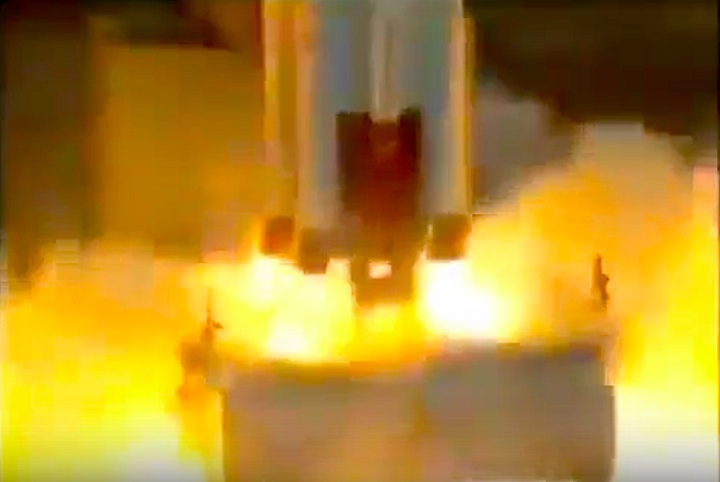
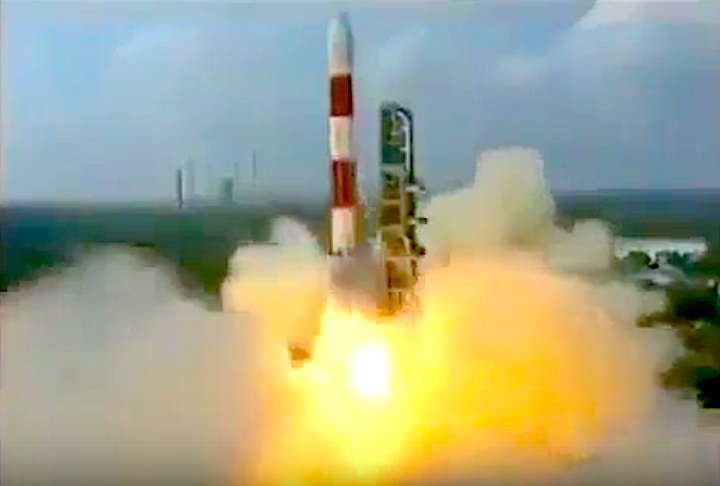

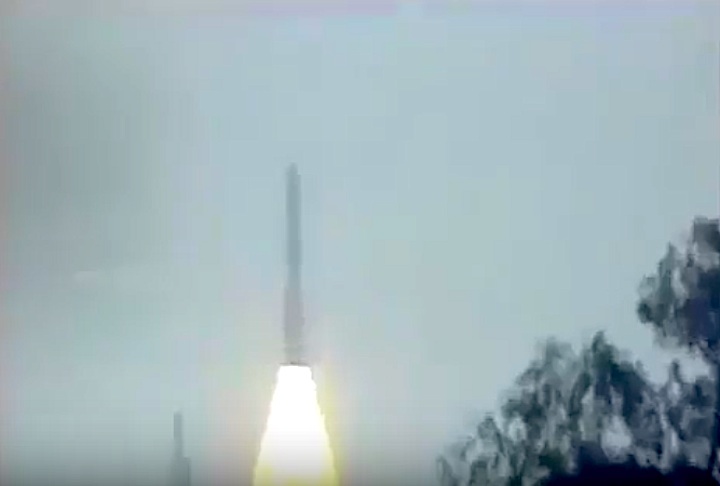


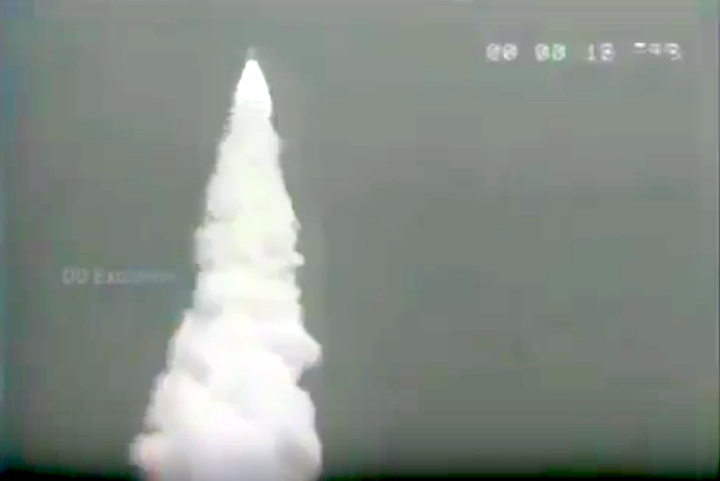


Quelle: ISRO
---
Update:
- Sci/Tech
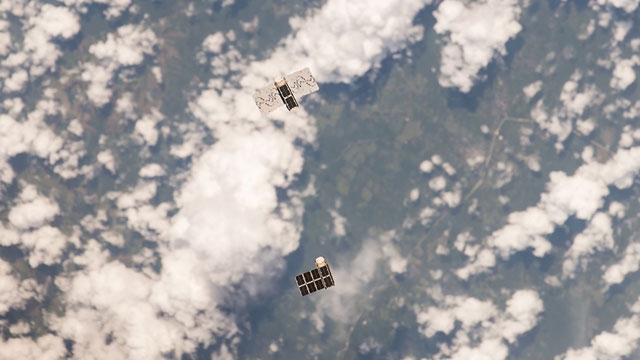
Thanks to ISRO's history-making launch, Earth gets its own massive selfie cam
A network of palm-sized satellites currently in orbit have cameras that can take daily photos of almost any location on Earth. (Photo credit: Planet Labs)
88 of the 104 satellites that ISRO launched on 15 February form part of a network that delivers unprecedented Earth imaging capabilities
India’s space organization ISRO made history by successfully inserting 104 satellites as part of a single launch today. Of the multitude of piggybacked satellites that comprised this launch, 88 of them are owned by a company called Planet Labs. And they aim to do something pretty spectacular with them--to create an earth-sized selfie camera that takes daily snapshots of virtually every part of the earth’s surface.
Planet Labs, based in San Francisco, offers geo-imaging services that are aimed at applications ranging from agriculture tracking, and construction, to deforestation and the effects of climate change. Businesses, developers and researchers utilize their services to obtain imagery of the earth that, unlike most other geo-imaging services, is updated daily. This dynamic stream of visual data depicts incremental changes on the earth’s surface -- from the flow of transport trucks to a factory, to changes in tree cover in timber operations. When accrued over a period of time, the composite visual information reveal insights about the planet’s surface that were previously impossible to perceive.
Each of the company’s palm-sized ‘CubeSats’ are 10 cubic centimeters (with a volume of exactly 1 liter,) and weigh in at about 1.3 kilos. Planet Labs has already deployed flocks of these satellites in the past, but today’s ISRO PSLV-C37 launch augments the largest number of these ‘Doves’ to their network, bringing it to over 100. The satellites are are maintained in heliosynchronous orbit, meaning they stay stationary with respect to the Sun while the Earth rotates beneath them. With this setup, each of the satellites effectively passes over the same spot above the Earth at the same time each day, enabling them to blanket virtually every square meter of our planet (except small polar regions) with imaging capability. Apart from this web of satellites that shoot regular photos, there are others in different orbits that are capable of capturing information across other spectral wavelengths as well.
Most geo-imaging services aim to maximize resolution, being able to discern details as small as half a meter on the surface of the Earth. While the Planet Labs satellites are less capable -- each having a resolution of 5 meters -- they make up in frequency and low cost what they forfeit in optical resolution. This unique attribute enables observing changes on the surface of our planet like never before, helping companies formulate more efficient logistics, or arming geologists with observable changes in terrestrial features over week, months and years.
The company also offers the facility to ‘drill down’ to gain more detailed information -- their recent purchase of seven satellites from Google’s Terra Bella division gives them the ability to resolve down to 1 meter, should a specific area of a daily scan require a sharper view.
Quelle: DNA
---

Update 19.00 MEZ
.
ISRO Sets Historic World Record, Launches 104 Satellites In One Go

ISRO's Polar Satellite Launch Vehicle, PSLV-C37, also completed its 39th mission today.
NEW DELHI: ISRO, or Indian Space Research Organisation, today created history when it launched 104 satellites on the PSLV-C37 rocket from Andhra Pradesh's Sriharikota spaceport today. The countdown for the launch had begun 28 hours before the scheduled launch at 9.28 am.
This is the highest number of satellites ever launched in a single mission. With this feat, India broke the previous record when Russia sent 37 satellites in 2014. ISRO, interestingly, launched 67 more satellites today than Russia did in their single mission. ISRO had earlier successfully attempted to launch 23 satellites in a single rocket in June, 2015.
ISRO launched a record 104 satellites on a single rocket from Sriharikota in Andhra Pradesh.
While the Cartosat-2 series satellite, weighing 718 kg, was injected space, the other 103 nano satellites were subsequently injected within a time span of 28 minutes. Most of the 103 satellites belonged to international countries - Kazakhstan, United Arab Emirates, Israel, Netherlands among others. Ninety-six of these satellites, however, belonged to the United States.India's Polar Satellite Launch Vehicle, PSLV-C37, also completed its 39th mission today.
"All 104 satellites successfully placed in Orbit. My hearty congratulations to the entire ISRO team for the wonderful job they have done," said ISRO chief AS Kiran Kumar, amidst loud cheers from the other scientists.
Following the successful mission, President Pranab Mukherjee and Prime Minister Narendra Modi were among the first to applaud ISRO.
Quelle: NDTV



